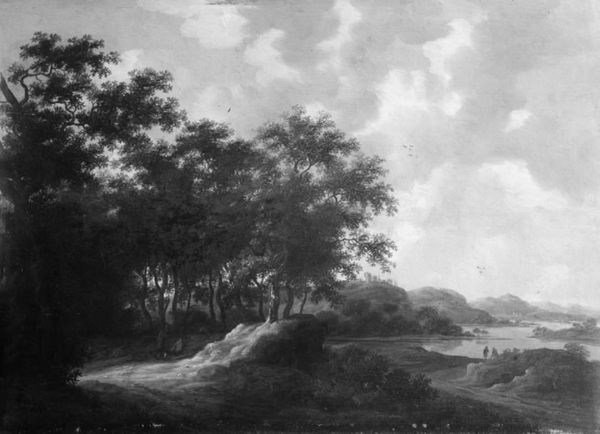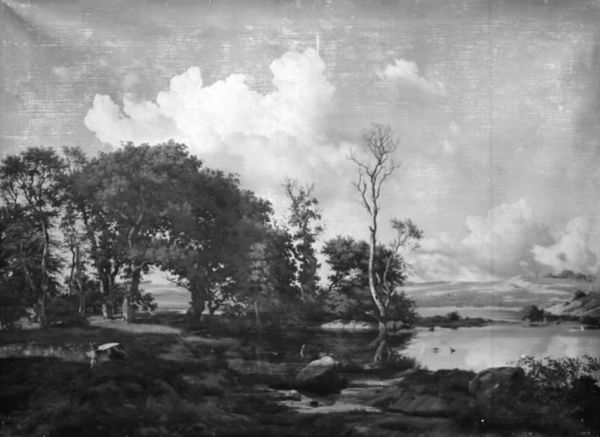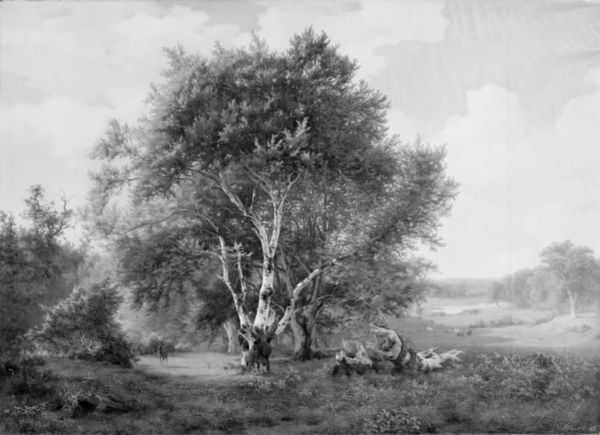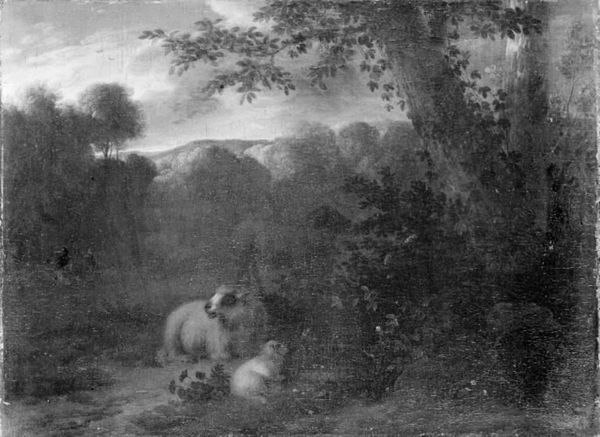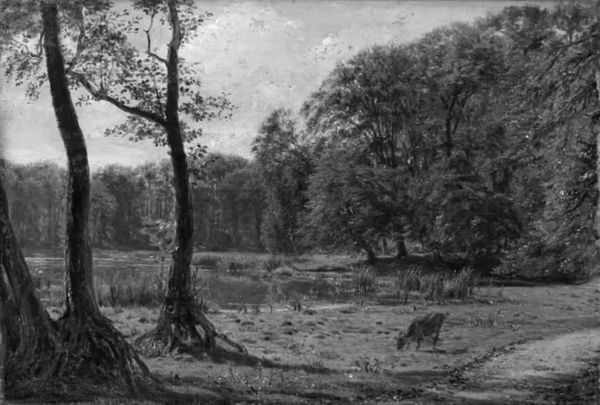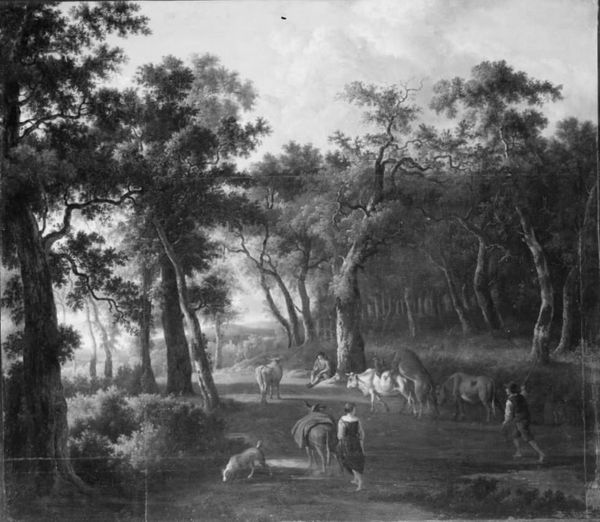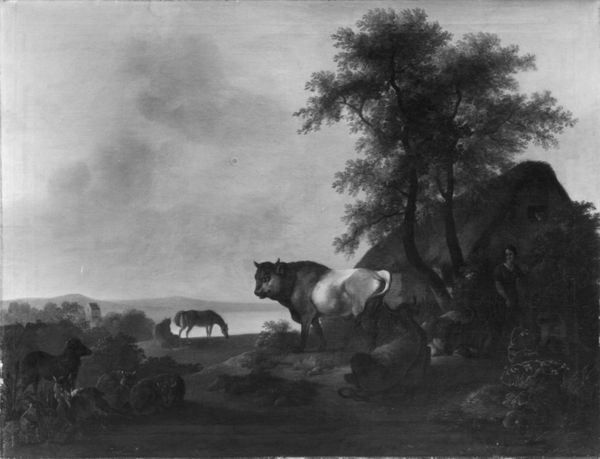
painting, canvas
#
baroque
#
painting
#
countryside
#
landscape
#
figuration
#
canvas
#
black and white
#
monochrome photography
#
fog
#
genre-painting
#
monochrome
#
monochrome
Dimensions: 112 cm (height) x 153 cm (width) (Netto)
Curator: Upon viewing this work, "Landscape with Fauns and Nymphs," dating somewhere between 1606 and 1661, I'm immediately struck by the distribution of tone; how the artist uses light and shadow to delineate spatial recession. Editor: I’m not going to lie, the overwhelming mood is dark; but it still feels somehow playful, in a dark, lustful way. Given that this painting, by Cornelis Vroom, depicts fauns and nymphs, the darker tone gives it an almost illicit or private impression, a glance into another world that's maybe forbidden. Curator: That darkness actually seems very deliberate. If you examine the brushstrokes within the treeline, there’s an effort to emphasize the textured and layered brushwork and play up contrasts; the artist is manipulating what details we're allowed to clearly see. This isn’t a pristine idealized landscape. Editor: Right. What strikes me, then, is how the societal views of the Baroque Era play out here; there's a political element to landscapes as well. They show human impact on the land. How does Vroom use landscape to either uphold power structures, or hint at shifting roles between citizens and rulers? Curator: An interesting point. We often perceive classical references as upholding the status quo; but you're encouraging us to not overlook the artifice here. Look at how these mythical figures are actually placed within the pictorial space. The figures aren’t arranged symmetrically. There is no central figure and instead groupings which break with the balanced compositions associated with Classicism and anticipate asymmetry in the coming century. Editor: So rather than order, a hint of disorder, right? I wonder, if we saw this artwork displayed in its contemporary context, the SMK museum, how does that institution color our perception of it today, shaping and maybe even obscuring original meanings of genre and societal structure? Curator: Precisely. The semiotic elements work within the structural conventions while subtly subverting expectations. The eye doesn’t simply glide; it lingers, seeking patterns, attempting to resolve the tension. Editor: Thank you, as always, for the rich, structural insights, pointing toward deeper analysis and new discoveries. Curator: And thank you for reminding us that we cannot ignore history and that cultural narratives actively change how artworks affect their viewers.
Comments
No comments
Be the first to comment and join the conversation on the ultimate creative platform.


